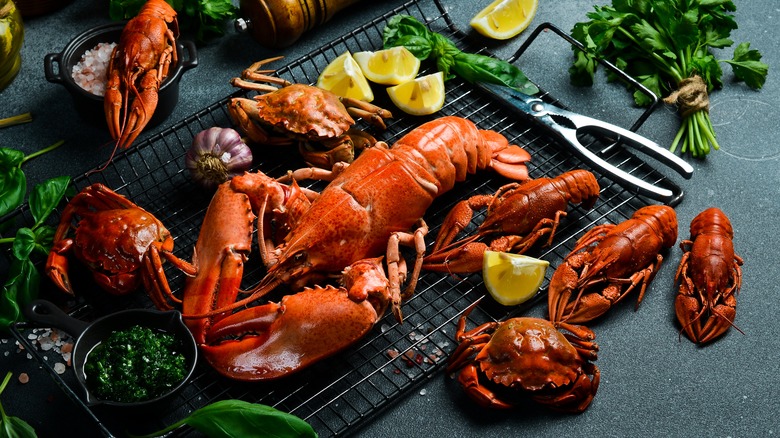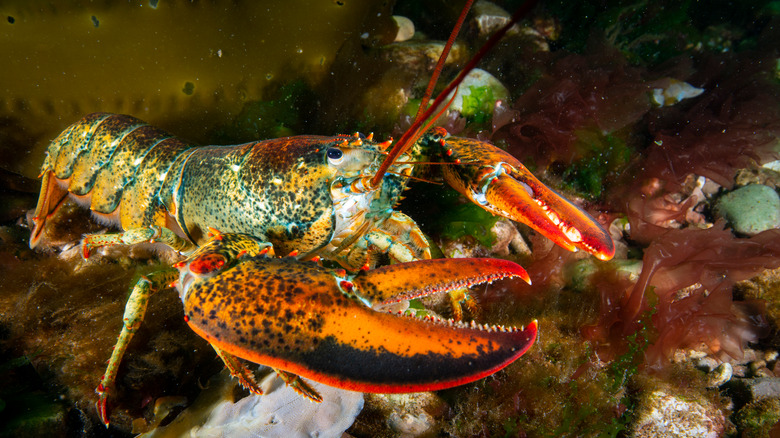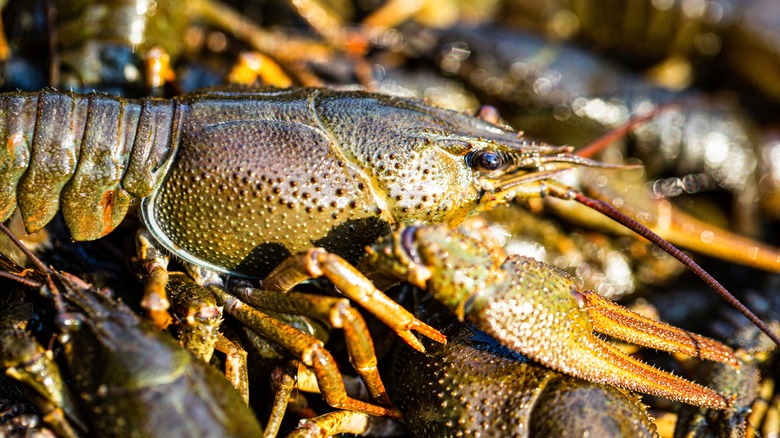Lobster Vs Crawfish: What's The Difference?
Americans love seafood. From scallops and crabs to tuna and perch, creatures from the water offer abundant options for tasty table fare. Two popular options are crustaceans: lobster and crawfish. From fine-dining establishments to backyard seafood boils these hard-shelled critters are consumed across the country in large amounts. The National Oceanic and Atmospheric Administration (NOAA) reports that the latest tallied lobster harvest tipped the scales at nearly 120 million pounds. The state of Louisiana, the leading crawfish producer, supplies over 100 million pounds of crawfish to the American public every year.
Sporting exoskeletons, sharp claws, and a greenish-brown exterior, lobsters and crawfish certainly look alike. But while both might taste delicious with a liberal helping of butter, they are two distinct animals. From their size and habitat to their role in common dishes, these crustaceans have many differences. On a plate, they even provide different culinary experiences. Let's take a deep dive to understand the detailed variations between these seafoods.
What are lobsters?
There are hundreds of lobster species across the world's oceans, but the ones most commonly found in restaurants and at the grocery store are American lobsters. These crustaceans live in salt water and reside on the ocean floor. According to the NOAA, lobsters can live up to 100 years old and can grow up to 44 pounds. They are most common along the northeast coast of the United States in the Atlantic Ocean.
In the kitchen, most lobsters are prepared whole and served as a main dish. Both the tail and claw meat are particularly prized for their rich flavor and melt-in-your-mouth texture. Many recipes call for lobsters to be cooked in a pot, but that doesn't necessarily mean to boil them. In GQ, fishmonger Vinny Milburn warns people against boiling. "People tend to boil lobsters, [but] submerging them in water takes away flavor," he says. Instead, you should aim to steam lobsters to preserve their rich flavor.
What about crawfish?
Known by a host of regional names — crayfish, crawdads, and even freshwater lobsters — crawfish are freshwater crustaceans. Instead of oceans, they reside in lakes, rivers, and streams. Crawfish can measure up to one foot long and weigh 13 pounds, although most specimens average smaller sizes. They can live over 20 years and even spend portions of their life burrowed into dry land. They are found in the highest concentrations throughout the southeast United States.
Given their smaller size, crawfish are handled a bit differently in the kitchen compared to lobster. Instead of cooking them whole, crawfish are usually mixed into a larger dish. Unlike lobsters, most recipes specifically call for crawfish to be boiled. They are added to pots filled with veggies and Cajun seasonings. Once complete, a traditional Cajun crawfish boil is piled high directly onto a table covered in newspaper and eaten family-style. To eat a crawfish, separate the head from the tail and peel the tail to expose the meat. Enjoy the rich tail meat and suck the Cajun juices directly from the head.


